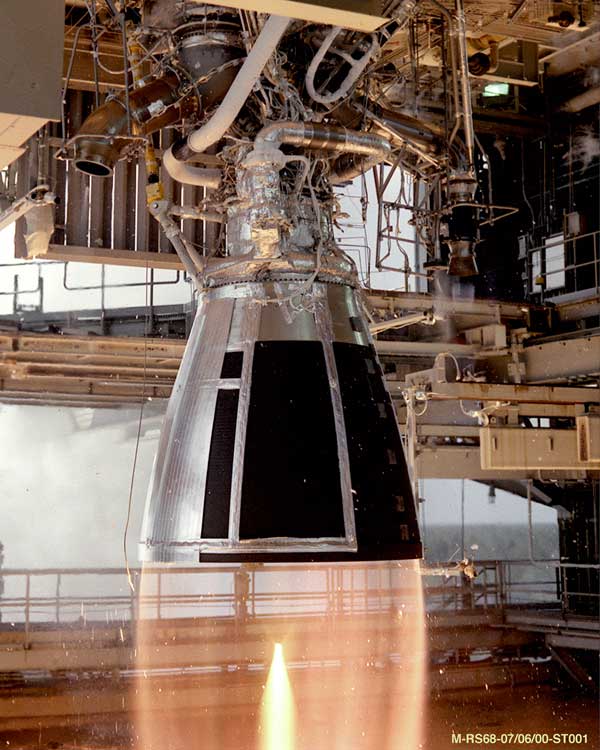|
Masten Space Systems
Masten Space Systems was an aerospace manufacturer startup company in Mojave, California (formerly in Santa Clara, California) that was developing a line of vertical takeoff, vertical landing (VTVL) rockets, initially for uncrewed research sub-orbital spaceflights and eventually intended to support robotic orbital spaceflight launches. In 2020, NASA awarded Masten a contract for a lunar lander mission; NASA was to pay Masten US$75.9 million for Masten to build and launch a lander called XL-1 to take NASA and other customer payloads to the south pole of the Moon. Masten Mission One would have been Masten's first space flight; it was scheduled for launch in November 2023. The company filed for Chapter 11 bankruptcy in July 2022, and was later acquired by Astrobotic Technology in September 2022. Its web url "masten.aero" is still active, and its operations continue as ""Astrobotic's Propulsion and Test Department". Overview Masten Space Systems was a Mojave, California b ... [...More Info...] [...Related Items...] OR: [Wikipedia] [Google] [Baidu] |
Masten Logo
Masten may refer to: Places * Masten, Pennsylvania, USA; a ghost town * Masten Creek, a stream in Minnesota, USA People * Chris Masten (born 1969) Aussie-rules player * Joseph G. Masten (1809–1871) Mayor of Buffalo, New York Other uses *Masten Space Systems, an aerospace manufacturer *Masten-Quinn House in Wurtsboro, NY, USA See also * Mastens Corner, Delaware, USA; an unincorporated community in Kent County * Masten Gregory Masten Gregory (February 29, 1932 − November 8, 1985) was an American racing driver, who competed in Formula One from to . Nicknamed "the Kansas City Flash", Gregory won the 24 Hours of Le Mans in with NART. Gregory participated in 43 Form ... (1932-1985) F1 racecar driver from the U.S. * Peter Masten Dunne (1889-1957) U.S. historian {{Disambiguation, geo, surname ... [...More Info...] [...Related Items...] OR: [Wikipedia] [Google] [Baidu] |
Astrobotic Technology
Astrobotic Technology, Inc., commonly referred to as Astrobotic, is an American private company that is developing space robotics technology for lunar and planetary missions. It was founded in 2007 by Carnegie Mellon professor Red Whittaker and his associates with the goal of winning the Google Lunar X Prize. The company is based in Pittsburgh, Pennsylvania. Their first launch occurred on January 8, 2024, as part of NASA's Commercial Lunar Payload Services (CLPS) program. The launch carried the company's ''Peregrine'' lunar lander on board the first flight of the Vulcan Centaur rocket from Florida's Space Force Station LC-41. The mission was unable to reach the Moon for a soft or hard landing. On June 11, 2020, Astrobotic received a second contract for the CLPS program. NASA would pay Astrobotic US$199.5 million to take the VIPER rover to the Moon, targeting a landing in November 2024. In July 2024, NASA announced that VIPER had been cancelled. History In 2007, the team de ... [...More Info...] [...Related Items...] OR: [Wikipedia] [Google] [Baidu] |
Flight Termination System
In rocketry, range safety or flight safety is ensured by monitoring the flight paths of missiles and launch vehicles, and enforcing strict guidelines for rocket construction and ground-based operations. Various measures are implemented to protect nearby people, buildings and infrastructure from the dangers of a rocket launch. Governments maintain many regulations on launch vehicles and associated ground systems, prescribing the procedures that need to be followed by any entity aiming to launch into space. Areas in which one or more spaceports are operated, or ranges, issue out closely guarded exclusion zones for air and sea traffic prior to launch, and close off certain areas to the public. Contingency procedures are performed if a vehicle malfunctions or veers off course mid-flight. Sometimes, a range safety officer (RSO) commands the flight or mission to end by sending a signal to the flight termination system (FTS) aboard the rocket. This takes measures to eliminate any mean ... [...More Info...] [...Related Items...] OR: [Wikipedia] [Google] [Baidu] |
Suborbital
A sub-orbital spaceflight is a spaceflight in which the spacecraft reaches outer space, but its trajectory intersects the surface of the gravitating body from which it was launched. Hence, it will not complete one orbital revolution, will not become an artificial satellite nor will it reach escape velocity. For example, the path of an object launched from Earth that reaches the Kármán line (about – above sea level), and then falls back to Earth, is considered a sub-orbital spaceflight. Some sub-orbital flights have been undertaken to test spacecraft and launch vehicles later intended for orbital spaceflight. Other vehicles are specifically designed only for sub-orbital flight; examples include crewed vehicles, such as the X-15 and SpaceShipTwo, and uncrewed ones, such as ICBMs and sounding rockets. Flights which attain sufficient velocity to go into low Earth orbit, and then de-orbit before completing their first full orbit, are not considered sub-orbital. Examples o ... [...More Info...] [...Related Items...] OR: [Wikipedia] [Google] [Baidu] |
Mars 2020
Mars 2020 is a NASA mission that includes the rover ''Perseverance (rover), Perseverance'', the now-retired small robotic helicopter ''Ingenuity (helicopter), Ingenuity'', and associated delivery systems, as part of the Mars Exploration Program. Mars 2020 was launched on an Atlas V rocket at 11:50:01 Coordinated Universal Time, UTC on July 30, 2020, and landed in the Martian crater Jezero (crater), Jezero on February 18, 2021, with confirmation received at 20:55 UTC. On March 5, 2021, NASA named the landing site Octavia E. Butler Landing. As of , ''Perseverance'' has been on Mars for Sol (day on Mars), sols ( days, total days; ). ''Ingenuity'' operated on Mars for Sol (day on Mars), sols ( days, total days; ) before sustaining serious damage to its rotor blades, possibly all four, causing NASA to retire the craft on January 25, 2024. ''Perseverance'' is investigating an Astrobiology, astrobiologically relevant ancient environment on Mars for its Geology of Mars, surface ... [...More Info...] [...Related Items...] OR: [Wikipedia] [Google] [Baidu] |
Rocket Engine
A rocket engine is a reaction engine, producing thrust in accordance with Newton's third law by ejecting reaction mass rearward, usually a high-speed Jet (fluid), jet of high-temperature gas produced by the combustion of rocket propellants stored inside the rocket. However, non-combusting forms such as cold gas thrusters and nuclear thermal rockets also exist. Rocket vehicles carry their own oxidiser, unlike most combustion engines, so rocket engines can be used in a vacuum, and they can achieve great speed, beyond escape velocity. Vehicles commonly propelled by rocket engines include missiles, Rocket-assisted projectile, artillery shells, ballistic missiles and rockets of any size, from tiny Rocket (firework), fireworks to Rocket (weapon), man-sized weapons to huge Space vehicle, spaceships. Compared to other types of jet engine, rocket engines are the lightest and have the highest thrust, but are the least propellant-efficient (they have the lowest specific impulse). The ideal ... [...More Info...] [...Related Items...] OR: [Wikipedia] [Google] [Baidu] |
Liquid Oxygen
Liquid oxygen, sometimes abbreviated as LOX or LOXygen, is a clear cyan liquid form of dioxygen . It was used as the oxidizer in the first liquid-fueled rocket invented in 1926 by Robert H. Goddard, an application which is ongoing. Physical properties Liquid oxygen has a clear cyan color and is strongly paramagnetic: it can be suspended between the poles of a powerful horseshoe magnet. Liquid oxygen has a density of , slightly denser than liquid water, and is cryogenic with a freezing point of and a boiling point of at . Liquid oxygen has an expansion ratio of 1:861 and because of this, it is used in some commercial and military aircraft as a transportable source of breathing oxygen. Because of its cryogenic nature, liquid oxygen can cause the materials it touches to become extremely brittle. Liquid oxygen is also a very powerful oxidizing agent: organic materials will burn rapidly and energetically in liquid oxygen. Further, if soaked in liquid oxygen, some materials su ... [...More Info...] [...Related Items...] OR: [Wikipedia] [Google] [Baidu] |
Isopropyl Alcohol
Isopropyl alcohol (IUPAC name propan-2-ol and also called isopropanol or 2-propanol) is a colorless, flammable, organic compound with a pungent alcoholic odor. Isopropyl alcohol, an organic polar molecule, is miscible in water, ethanol, and chloroform, demonstrating its ability to dissolve a wide range of substances including ethyl cellulose, polyvinyl butyral, oils, alkaloids, and natural resins. Notably, it is not miscible with salt solutions and can be separated by adding sodium chloride in a process known as salting out. It forms an azeotrope with water, resulting in a boiling point of 80.37 °C and is characterized by its slightly bitter taste. Isopropyl alcohol becomes viscous at lower temperatures, freezing at −89.5 °C, and has significant ultraviolet-visible absorbance at 205 nm. Chemically, it can be oxidized to acetone or undergo various reactions to form compounds like isopropoxides or aluminium isopropoxide. As an isopropyl group linked ... [...More Info...] [...Related Items...] OR: [Wikipedia] [Google] [Baidu] |
Commercial Lunar Payload Services
Commercial Lunar Payload Services (CLPS) is a NASA program to hire companies to send small robotic landers and rovers to the Moon. Most landing sites are near the lunar south pole where they will scout for lunar resources, test in situ resource utilization (ISRU) concepts, and perform lunar science to support the Artemis lunar program. CLPS is intended to buy end-to-end payload services between Earth and the lunar surface using fixed-price contracts. The program achieved the first landing on the Moon by a commercial company in history with the IM-1 mission in 2024. The program was extended to add support for large payloads starting after 2025. The CLPS program is run by NASA's Science Mission Directorate along with the Human Exploration and Operations and Space Technology Mission directorates. NASA expects the contractors to provide all activities necessary to safely integrate, accommodate, transport, and operate NASA payloads, including launch vehicles, lunar lander spacecraft ... [...More Info...] [...Related Items...] OR: [Wikipedia] [Google] [Baidu] |
Lunar CATALYST
The Lunar CATALYST (Lunar Cargo Transportation and Landing by Soft Touchdown) initiative is an attempt by NASA to encourage the development of robotic lunar landers that can be integrated with United States commercial launch capabilities to deliver payloads to the lunar surface. NASA aims to build on its partnerships with the U.S. commercial space industry that are developing new spacecraft and rockets capable of delivering cargo and crew to low Earth orbit. Recognizing United States industry's interest in reaching and exploring the Moon, the Agency has competitively selected three partners to spur commercial cargo transportation capabilities to the surface of the Moon. The hope is commercial robotic lunar lander capabilities will address emerging demand by private customers who wish to conduct activities on the Moon and could also enable new science and exploration missions of interest to the larger scientific and academic communities. Currently the Lunar CATALYST initiative ... [...More Info...] [...Related Items...] OR: [Wikipedia] [Google] [Baidu] |
X-Prize Foundation
XPRIZE Foundation is a non-profit organization that designs and hosts public competitions intended to encourage technological development. The XPRIZE mission is to bring about "radical breakthroughs for the benefit of humanity" through incentivized competition. It aims to motivate individuals, companies, and organizations to develop ideas and technologies. The Ansari X Prize relating to spacecraft development was awarded in 2004, intended to inspire research and development into technology for space exploration. Background The first XPRIZE, the Ansari XPRIZE, was inspired by the Orteig Prize, a $25,000 prize offered in 1919 by French hotelier Raymond Orteig for the first nonstop flight between New York City and Paris. In 1927, underdog Charles Lindbergh won the prize in a modified single-engine Ryan aircraft called the Spirit of St. Louis. In total, nine teams spent $400,000 in pursuit of the Orteig Prize. In 1996, entrepreneur Peter Diamandis offered a $10-million pri ... [...More Info...] [...Related Items...] OR: [Wikipedia] [Google] [Baidu] |







